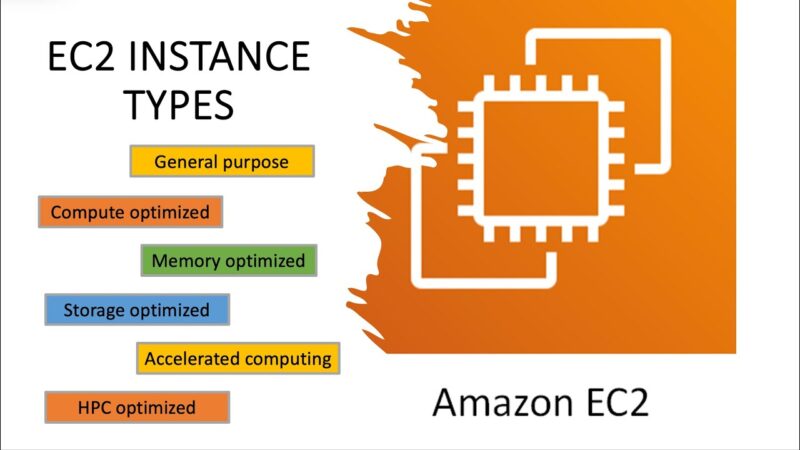The cloud has revolutionized businesses’ operations, offering unprecedented flexibility, scalability, and cost-efficiency. However, selecting the right instance type can be daunting with the myriad of instance types available, particularly in platforms like Google Cloud. This choice is critical as it directly impacts your cloud infrastructure’s performance, cost, and efficiency. In this guide, we will delve into the strategies for maximizing cloud efficiency by choosing the appropriate instance type, ensuring your business leverages the full potential of cloud computing.
Introduction to Cloud Instance Types

Choosing the right cloud instance type is akin to selecting the perfect tool for a job. Just as you wouldn’t use a sledgehammer to crack a nut, matching your cloud resources to your specific workload requirements is essential. Google Cloud offers various instance types designed to cater to performance needs, memory requirements, and workload types. From general-purpose instances to those optimized for computing, memory, or storage, the options are plentiful.
However, this abundance of choice can lead to decision paralysis. The challenge lies in understanding your workload’s unique demands and matching them with the appropriate instance type. This is where DoiT International and their Google Cloud instance types comparison tool becomes invaluable. It helps demystify the process, enabling businesses to make informed decisions.
Understanding Your Workload Requirements

Before deepening into instance-type specifics, you must thoroughly understand your workload requirements. To do this, you must delve into details and analyze aspects like compute power, memory, storage requirements, and network performance.
- Computer Requirements: The application characteristics are such that each application needs different levels of computing power. Thus, for example, with standard websites and small databases, you may be able to deploy such applications on general-purpose instances. Still, extensive and complex database systems or ML workloads will run faster and more efficiently on Compute Optimized Instances.
- Memory Needs: Memory-intensive applications, like extensive databases or caching systems in memory, can be particularly advantaged by the memory-optimized instances. With them, you now have more RAM allocated to the disk than CPU power, and the possible benefit is the lack of bottlenecks in memory-bound activities.
- Storage Requirements: The kind of storage you choose and its performance really have a huge impact on your application’s workflow. You need to find instances that are storage-optimized for workloads that involve high-speed sequential read and write in large volumes of data, like in data warehousing or log processing.
- Network Performance: If an application, such as video streaming or real-time data processing, can benefit from high network throughput and minimal latency, network-optimized instances should be a choice.
Understanding those factors, if present, is an excellent guide to aligning your workloads so that they can run on the appropriate instance type to ensure maximum efficiency at the lowest costs.
Selecting the Right Instance Type

With a clear understanding of your workload perquisites, the next logical step is to find the most cost-effective and optimized solution for the project. Google Cloud provides a varied list of instances, all of which are customizable to suit the individual needs of the clients, such as listed below:
- General-Purpose Instances: These instances are built to fit a broader range of workloads, making an optimum balance of CPU, RAM, and NW resources. They can be utilized in web servers, small databases, and development working areas.
- Compute-Optimized Instances: This type of instance is designed to take care of tasks of a compute-intensive nature with excellent output per a single CPU. Such instances are purposely intended for similar operations like batch processing, media transcoding, high-performance web servers, and scientific modeling.
- Memory-Optimized Instances: The given instances provide a wealth of memory resources over the CPU and are suitable for memory-centric applications like big databases, in-memory caches, and real-time big data analytics.
- Storage-Optimized Instances: This style aims to extract continuous data on and off the system from large datasets. For data warehousing, log processing, and big data analysis algorithms, they are perfect platforms on which to land your data.
- Network-Optimized Instances: These instances are essentially targeted at applications that require a lot of data handling and low latency since they are capable of much higher throughput and have an overall lower latency. Online gaming, video streaming, and real-time data processing require this kind of lower latency and higher throughput applications.
Leveraging Tools for Optimal Selection

While being aware of your workload and the possible instances that you can use is one of the important things, using complementary tools such as the instance types comparison tool owned by Google Cloud can streamline the process further. This tool has a practical feature that allows users to compare different types of instances concurring with their needs. This helps them to find not only a performance-optimized but also a cost-effective option.
By using the recommended instance types, you can get the perfect information out of workload requirements and take financial and time investment measures, too. This will not only lighten the burden on the developers’ shoulders but also mean you can set up an exclusive cloud infrastructure according to your business requirements to ensure it not only gets maximum output but also saves costs.
Conclusion
To optimize the cloud’s performance, it is vital to plan the business model for a suitable instance-building type. It is known that when you comprehend workload requirements for these units and apply them to the Google Cloud instance comparison tool, the cloud will be settled because it will be tweaked for performance and cost distribution. Another good reason to value your cloud is the selection of the specific instance type that has been brought out. Reflect them accurately in your operation and identify the full power of cloud computing.

